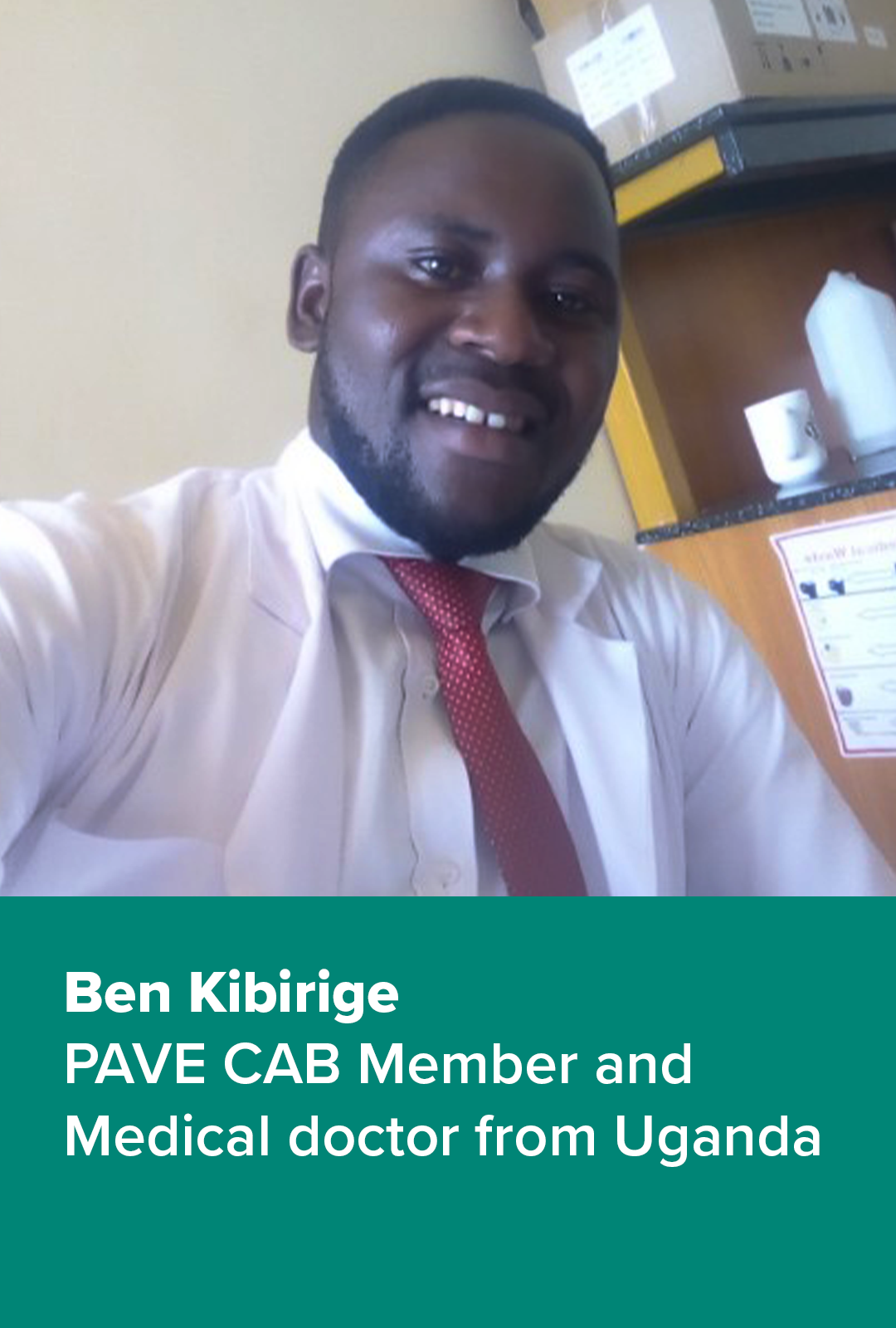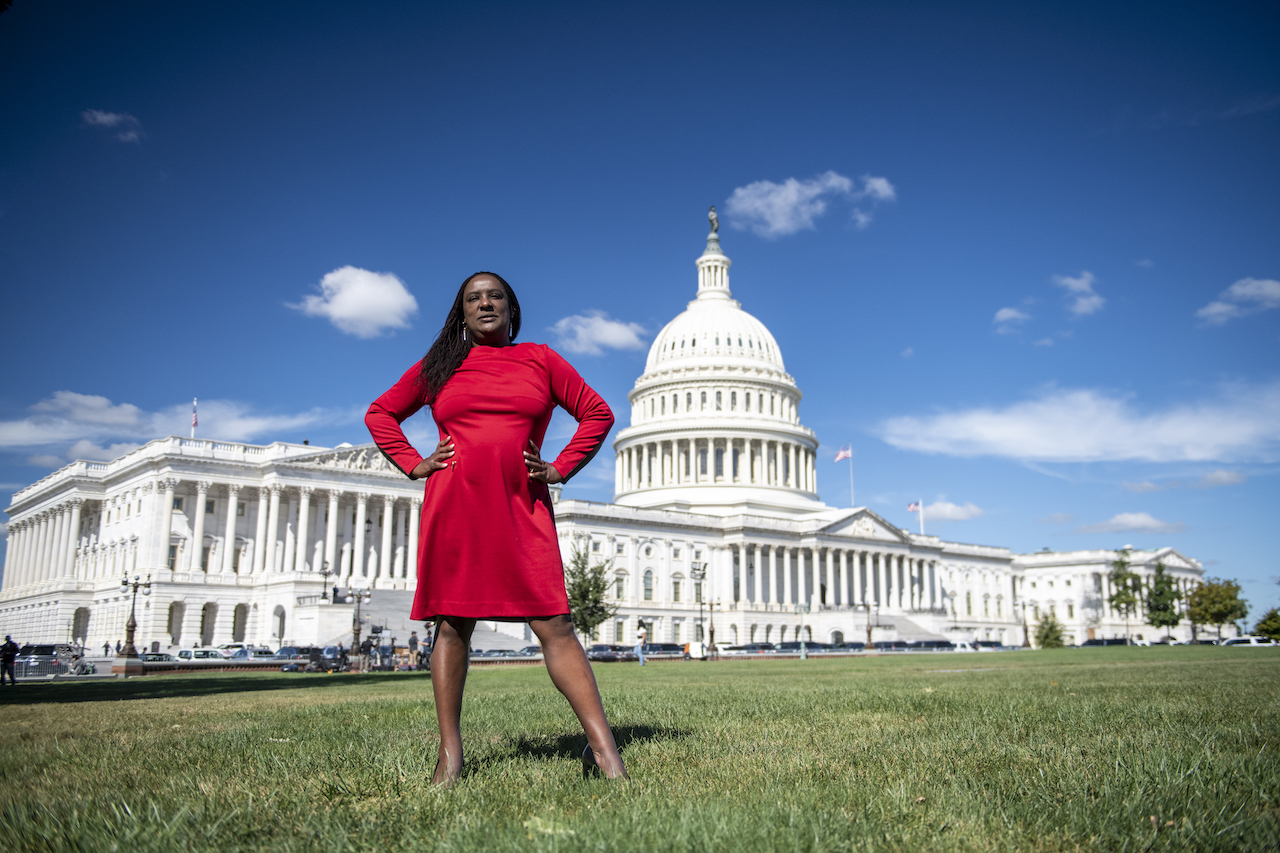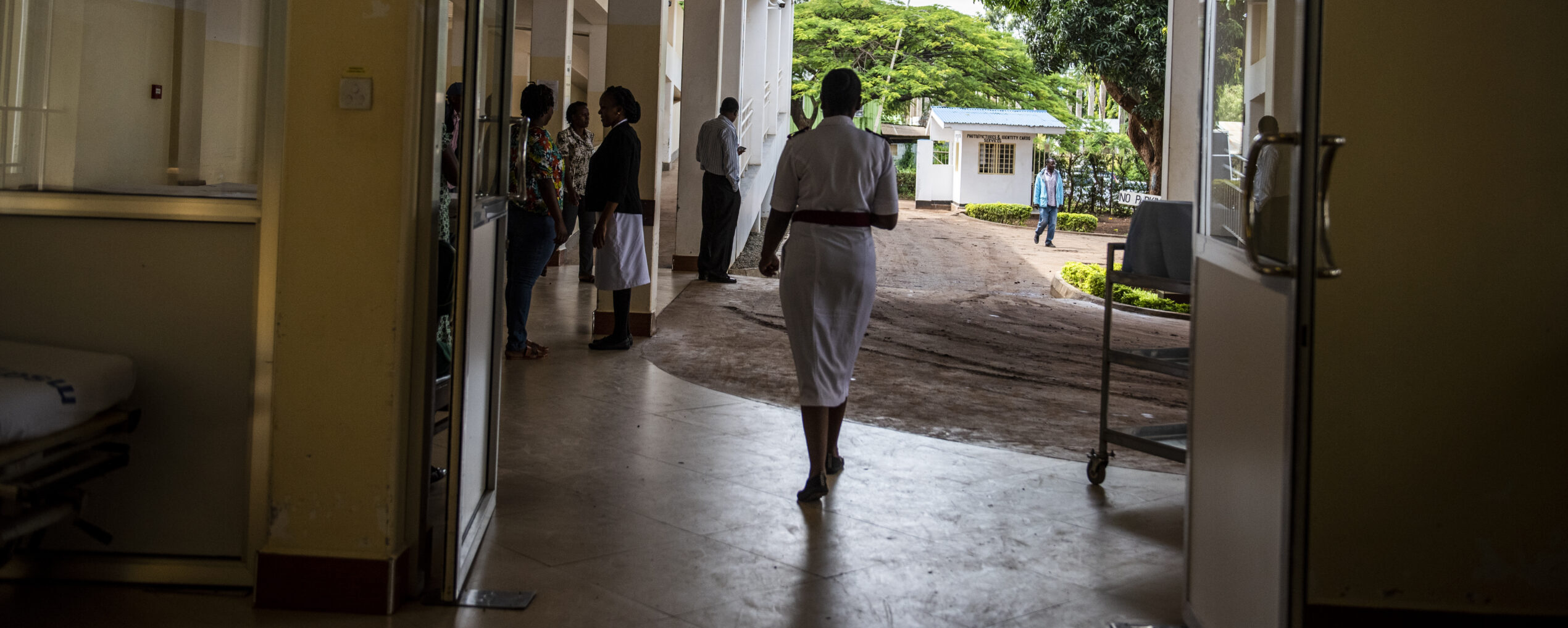 Ben Kibirige, a medical doctor in Kampala, Uganda, recalls a moment during his practice when he walked into a hospital ward where clinicians were conducting trials for TB drugs. One patient looked up at Kibirige and asked a question in the local language: “What are the things they’re putting us on? Do they want to kill me?”
Ben Kibirige, a medical doctor in Kampala, Uganda, recalls a moment during his practice when he walked into a hospital ward where clinicians were conducting trials for TB drugs. One patient looked up at Kibirige and asked a question in the local language: “What are the things they’re putting us on? Do they want to kill me?”
“They look worried,” said Kibirige. “As a person with a medical background, I knew what the researchers were doing. But probably this person didn’t understand properly. The clinicians didn’t explain to him fully what these trials were doing, that they were trying to come up with a drug that would be compatible with his body.”
This and other experiences, convinced Kibirige to become an advocate for vulnerable community members. In 2019, he founded the Centre for Young Mothers’ Voices with a focus on gender equality, especially regarding health care.
“I always tell people that I’m an unapologetic human rights advocate,” says Kibirige. “I am a human rights defender because I do believe that everyone has a right to do what they want, what they want in their bodies, what they want in their life.”
 In 2022, Kibirige joined nine other individuals on a newly formed community advisory board (CAB) of the Pediatric Adolescent Virus Elimination (PAVE) Collaboratory, which is funded by the U.S. National Institutes of Health.[1] He co-chairs the CAB, along with Mandisa Dukashe, the director of the HIV Survivors and Partners Network, based in South Africa. As a licensed nurse living with HIV, Dukashe understands HIV issues from multiple perspectives.
In 2022, Kibirige joined nine other individuals on a newly formed community advisory board (CAB) of the Pediatric Adolescent Virus Elimination (PAVE) Collaboratory, which is funded by the U.S. National Institutes of Health.[1] He co-chairs the CAB, along with Mandisa Dukashe, the director of the HIV Survivors and Partners Network, based in South Africa. As a licensed nurse living with HIV, Dukashe understands HIV issues from multiple perspectives.
“One thing that drew me closer to being a committed advisory board member was that balance between being a patient and at the same time an activist and a clinician,” says Dukashe. “Over the years, I’ve seen how the patient’s rights are violated in a clinical space where decisions are taken without approaching and getting informed consent from the client side. I’ve seen how it has negatively affected the lives of individuals.”
Martha Sichone-Cameron, also a member of the new PAVE CAB, says that it is crucial that the people from communities most affected by a health issue have a place at the research bench. An ambassador for the Elizabeth Glaser Pediatric AIDS Foundation (EGPAF), Sichone-Cameron now lives in the United States, but she grew up in Lusaka, Zambia, a country to which she maintains close ties. Sichone-Cameron, who holds a master’s degree in public health, decided decades ago to stand up for people who are underrepresented.
 “There are a lot of widows and orphans that I have worked with,” says Sichone-Cameron. “And the orphans were sometimes considered outcasts. So you went into the community. You led with compassion, taking care of people that had been rejected.”
“There are a lot of widows and orphans that I have worked with,” says Sichone-Cameron. “And the orphans were sometimes considered outcasts. So you went into the community. You led with compassion, taking care of people that had been rejected.”
Sichone-Cameron wants to do what she can to see that the concerns of children and young adults living with HIV are not forgotten by the scientific community: “I’ve always been an advocate for women being included in research, but more so the children, who are the last to ever be. Traditionally, community advisory boards are supposed to advise on the research that is going on and engage the community,” says Cameron. “But in a lot of cases, unfortunately, CABs have had only token representation.
“The strength and effectiveness of the PAVE CAB lies in 1) how representative it is and 2) how diverse it is: members of the CAB include both clinicians and community members from locations in Africa where research is being conducted,” says Sichone-Cameron. “This brings hope to the fact that there will be lived experience related to the ethical role of the CAB as well as the capacity to provide systematic review of both quantitative and qualitative evidence.”
A Bridge Between Researchers and the Community
In essence, members of the CAB have two roles. They advise the researchers and ask the tough questions to ensure the research being done is fully considered from patient and community perspectives. And they also engage their communities and promote health literacy.
“We are here to represent voices of communities,” says Kibirige. “We are like a bridge between principal investigators, scientists, and the communities at large. We hear what the community is saying because we are directly exchanging ideas, talking to these communities. And we also interact with the principal investigators and researchers. They introduced to us the work, what they want to do, the strategies and the interventions. Then they break it down and explain it to us so that if we understand it fully. Then we’ll go and engage our communities.”
“We are like a bridge between principal investigators, scientists, and the communities at large. We hear what the community is saying because we are directly exchanging ideas, talking to these communities.”
“There is a need for that in-between kind of a structure between scientists and communities,” emphasizes Dukashe. “Our role is more of leading community mobilization, community engagement—and making sure that scientific information is translated [into language that ordinary people can understand] and communicated to communities.”
“And we want to make sure that it’s done ethically,” says Sichone-Cameron, “We want to make sure that the mothers and children are cared for when it will be time to translate the research to children. I think the community advisory board is going to play a real role in this collaboratory compared to other experiences that I’ve had. This is the first time I am on a CAB that consistently queries and informs research practices and policy; we will be consulted and engaged in discussion about perceived discrepancies which can potential be resolved through discussion with the research team.
“I’ll give an example,” from my recent participation in in the inaugural Science Advisory Board Meeting,” Sichone-Cameron continues. “[The researchers] said that they’re trying to find if there’s HIV in the brain, and this meant doing spinal taps on children. So there we ask, ‘how do the children understand what’s happening? Is this going to be done in a safe way?’
“It is important to note that these are not little kids; they are young adults turning 17,” says Sharon Kruger, psychologist/investigator at the Children with HIV Early Antiretroviral (CHER) trial. “In preparation for the research study that includes a spinal tap we had discussions with the adolescent CAB and asked them for input on explaining the procedures to research participants.
“We explained exactly what the research entailed. We talked them through the procedure and showed them a visual image of a person sitting bent over with the spine exposed and where the ballpoint needle will be inserted after a numbing cream was applied and ensured that it had taken effect. We consulted them on what would make them participate—one participant stated that she would participate because she trusted us—and that places a great responsibility on us not to break that trust.
“This also feeds into the Health Belief Model that suggests attitudes and behavior is shaped by what the health provider recommends,” says Kruger. “thus ensuring that parents and young adults are fully informed before making a decision to enroll is very important to us.”
“This caused me to think about how we’ve come a long way in the sense that we were able to ask questions of the researchers,” says Sichone-Cameron. “We’re talking about children, so we really want to understand how is this research going to translate, what are the ethics of it?”
We Need a Cure
All three of these CAB members are excited to see a renewed push for a cure—and especially the PAVE focus on children, who have been frequently left out of HIV research— dating back to the beginning of the HIV pandemic 40 years ago—and may have different challenges and opportunities for cures than do adults. Globally, an estimated 16.8 million children, adolescents, and young adults under age 25 live with HIV. Despite prevention efforts of mother-to-child transmission, the childhood HIV epidemic continues with about 150,000 children born with HIV each year. These children, adolescents, and young adults take lifelong, daily antiretroviral therapy.
“I have witnessed what’s happened to some of the children who were born with the virus and the detriment on their mental health and wellbeing just in terms of growing up with HIV,” says Sichone-Cameron. “It is such a huge impact that I would rather see a cure and an end to that.”
Dukashe adds that while she is grateful for the highly effective antiretroviral medications that keep her alive, she feels that they have led to some complacency in terms of funding for a cure. She says that taking a daily drug for life may not seem like much of a burden for those who don’t have that need, but it builds up a dependency upon the health care system that could be virtually eliminated by a vaccine.
“What I’ve observed as a clinician is that when a child starts HIV treatment from a very young age, when they get to preteen adolescent stage, they get to be tired of taking treatment,” says Dukashe. “As a person who has actually been on treatment for 15 years, I know what it means to experience pill fatigue. It’s a reality. So any opportunity that can be available to give them a break from taking treatment—even if it’s not a complete cure— is I think it’s something that we really need to look into.
“I’ve watched parents or caregivers not being able to maintain treatment adherence for their children, leading to children not achieving viral suppression,” says Dukashe. “It is not a nice thing to watch over time.
Kibirige agrees: “As someone who’s a passionate advocate of sexual reproductive health, I’ve seen very many challenges when it comes to what people face in Uganda in terms of treatment and care, in terms of stigma and discrimination, in terms of pill burdens. With all our problems in Uganda—where you can even have stock out of HIV drugs, like third line drugs [intended for individuals whose bodies have rejected other HIV drugs]. What happens to those people when they don’t have daily drugs to take? It’s like sending them to their graves very early.
“I feel happy and proud to be part of this journey, to the global dream of getting an HIV cure,” says Kibirige. “HIV is very cunning. It mutates. But I am still optimistic.”
“And remember when you’re talking young people; you’re talking about leaders of tomorrow,” says Dukashe. “And we really want to make sure that our young ones stay for a longer time.”
“I feel happy and proud to be part of this journey, to the global dream of getting an HIV cure.”
[1] The PAVE Collaboratory also includes the U.S. National Institute on Drug Abuse (NIDA), the U.S. National Institute of Mental Health (NIHM), the Eunice Kennedy Shriver National Institute of Child Health and Human Development (NICHD), and the U.S. Office of AIDS Research.



